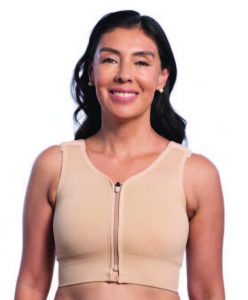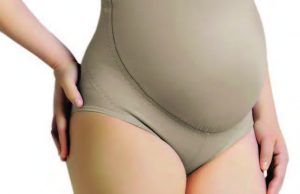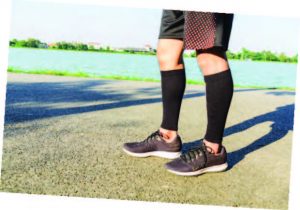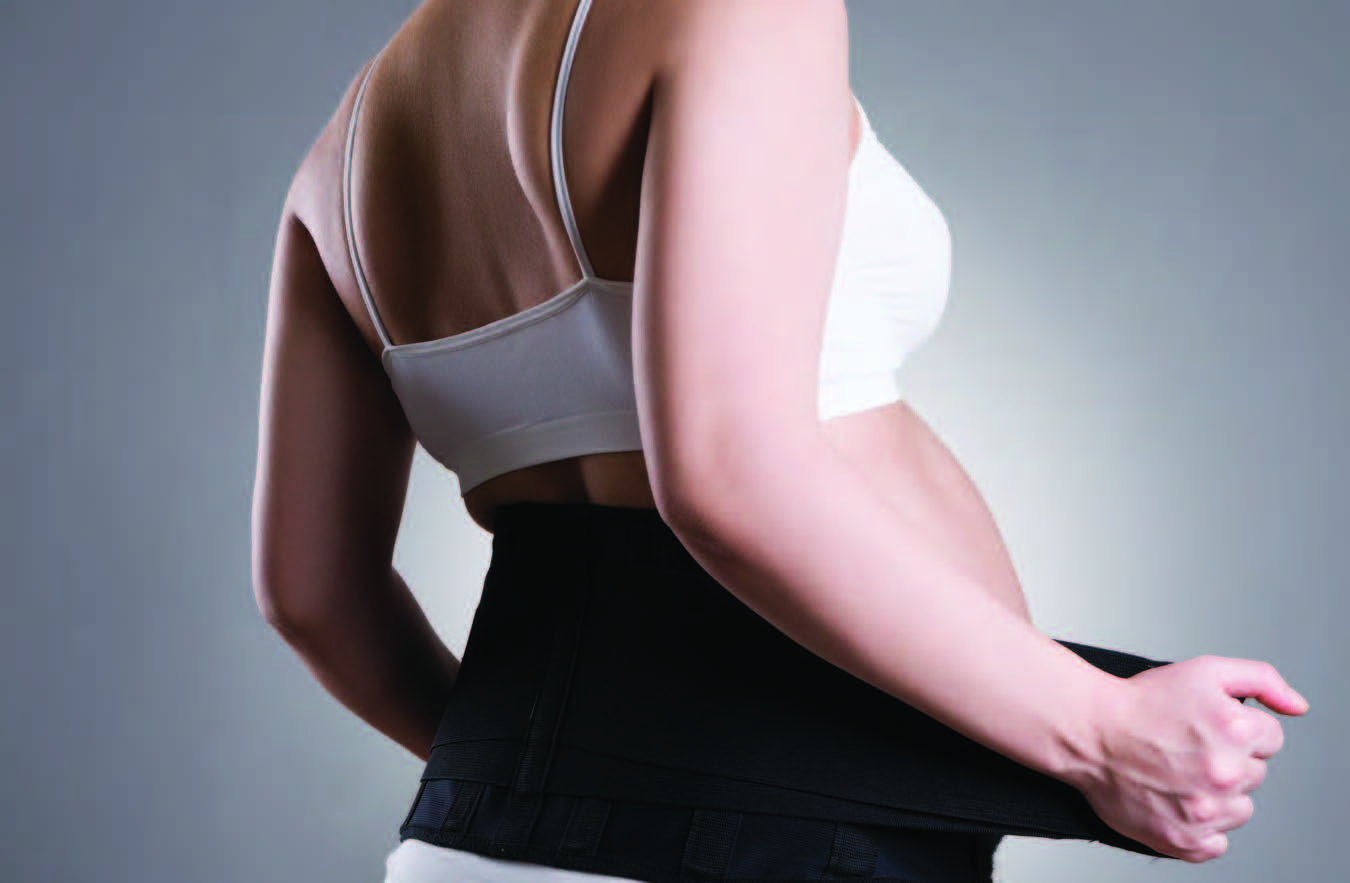For many women, finding the right post-operative compression garment is still a mystery.
By Caleb MacLean
Follow-up is everything after a hospital stay. For women returning home from surgery, childbirth or certain other medical procedures, part of that follow-up process involves an after-surgery garment of some kind. Typically, a doctor will mention a particular type of garment or possibly even a specific brand as patients are preparing to be discharged. However, most women have no concept of what to do next.
For instance, many women benefit from postpartum compression abdominal garments. In some cases, they are worn to help restore that pre-pregnancy figure. Jessica Alba (a former EDGE cover girl) famously wore a double corset 24/7 for 12 weeks after giving birth to her daughter and was back on the red carpet in no time. Other celebrities have fessed up about their use of compression garments in recent years, creating a mini-boom in the business. For mothers who have delivered via caesarian section, the support of a compression garment is less a choice than a must. It speeds recovery and healing of the abdominal muscles. Typically, an abdominal binder is worn for six to eight weeks after a c-section.

Prairie Wear
Post-operative compression garments often must be “staged.” For example, in a tumescent liposuction procedure, the surgical fluid used to loosen fat cells is not completely expelled. Patients begin with a “first stage” compression garment that helps with draining and also protects bruised and swollen areas. After a week or two, liposuction patients will switch to a less-confining “second stage” garment that allows the body to return to normal lymphatic functioning. After a month or more, when healing is complete, many patients opt for a “third stage” or everyday compression garment, which helps maintain the new body shape.
Trinitas patients often find their way to The Pink Room in Elizabeth, or its sister store in Union. The company is primarily known for its “shapewear”—waist cinchers, butt lifters, tummy-control garments and full-body shapers. In recent years, however, The Pink Room has become a go-to resource for after-surgery garments, with more than 20,000 items in stock and a sales staff meticulously trained by owner Maria Sparacio to ask the right questions and provide the right answers.
“Patients are referred to us by surgeons,” explains Sparacio, “but frequently they just tell them to go get a compression garment. For the women who come to us, it’s kind of a mystery. We spend 30 to 40 minutes on average consulting with new customers to find the garment that best matches their needs and is perfectly comfortable. We get it right 99 percent of the time—it’s very unusual when someone needs to come back.”
Wherever a woman goes for a compression garment, customization is crucial. There is no such thing as one-size-fits-all; the size and type of garment can vary dramatically depending on the type of surgery, the amount of swelling, the type of support needed, a patient’s sensitivity to compression and the length of time a garment is needed—from a couple of weeks to a couple of months or more.
As for Sparacio, she got into the business in a roundabout way. A native of Colombia, she was working her way through law school as a bank manager in the Pacific coast city of Cali when she came to the United States on a student visa. The plan was to improve her proficiency in English, but it didn’t take long for her to realize that she had a head for figures—the financial kind, as well as the humankind—and that these dual talents would serve her well as an entrepreneur.
“I noticed how many women wore clothing that was either the wrong size or the wrong style for their body types,” Sparacio recalls. “It was obvious to me that they were not getting the help they needed in stores. I watched how they did business and always thought that people wanted more help. I thought, ‘I can do this better. I can be more professional. I can help people.’”

Yoga Compression Garments
Sparacio opened The Pink Room, on Morris Avenue in Elizabeth in 2008, just as the economy was hurtling off a cliff. However, her knack for individualizing service and solving problems for a multitude of body types enabled the store to build up a loyal walk-in and online clientele. She was able to open a second store, in Union, a few years ago.
The quest for the ideal garment often takes consumers to a website rather than a store. It might be a matter of convenience, or a reluctance to allow others to see the physical aftermath of childbirth or surgery. Online shoppers should have the same goal as store visitors: finding a compression garment that closely mimics the wearer’s movements while staying flush to the skin. No creases, no bunching, no extra space. Most internet sellers have liberal return policies, and build that into their pricing. They also carry thousands of sizes. Many women start in a store and then order online from that store (or a competitor) going forward. Bargain shopping isn’t really an option, however. In the compression business, you generally get what you pay for.

www.istockphoto.com
Sports Compression: A Placebo?
Compression garments have been around for many decades, of course, and are perhaps more familiar to athletes than surgical patients. The last 20 years have seen a boom in performance-enhancing compression garments. In fact, many products originally designed for medical purposes, such as calf sleeves, have seen sales skyrocket among athletes. Whether compression garments actually increase performance is debatable; it could simply be a case of athletes believing they do. Most medical experts agree, however, that where they are most helpful is in the recovery phase of sports—for much the same reason they work post-surgery.
EDITOR’S NOTE: Not all post-surgery garments require a consultation or fitting. Maria Sparacio estimates that 60 percent of her customers buy online while 40 percent visit her stores.





